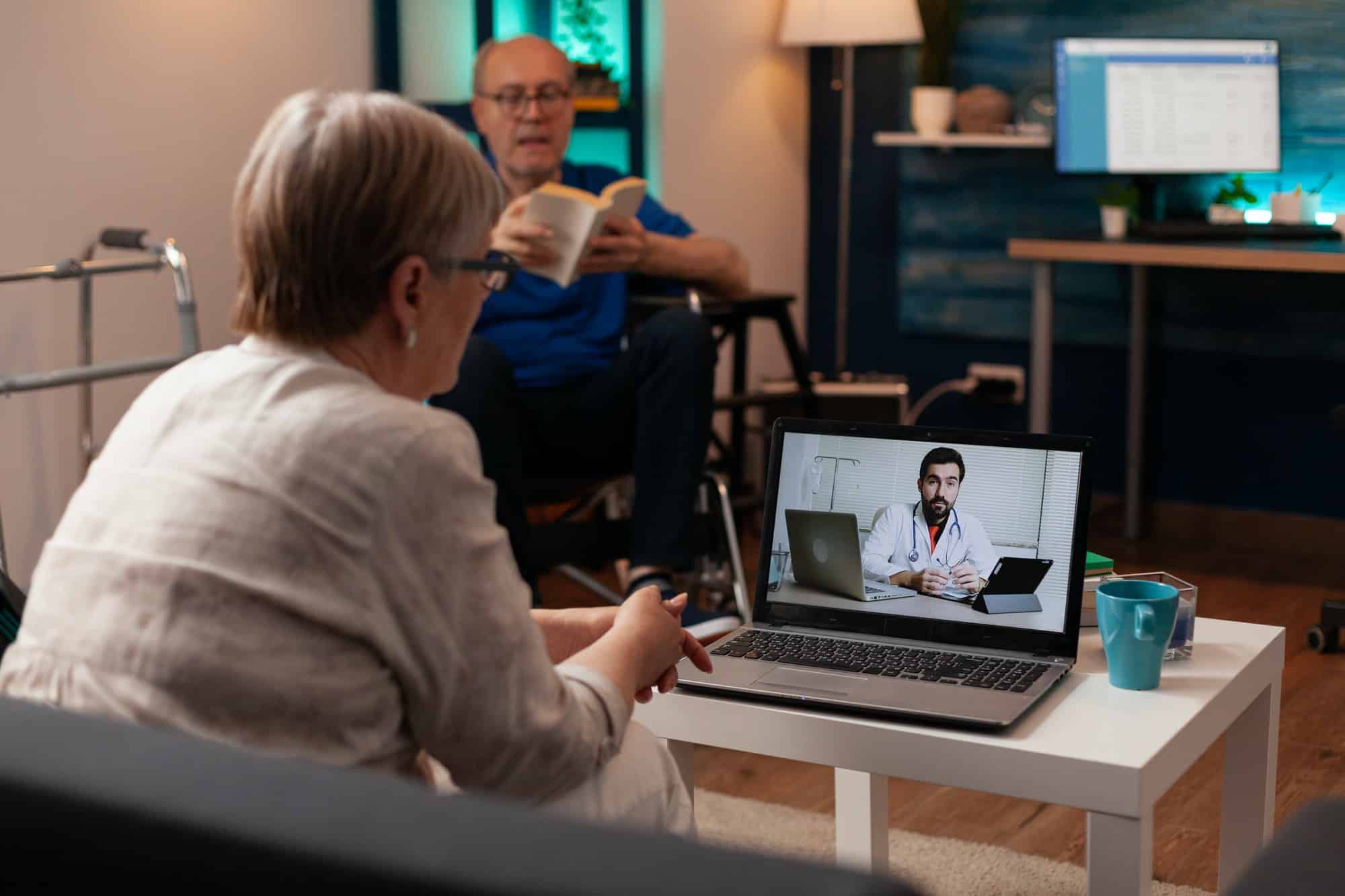How Can Telemedicine Facilitate Sports Injury Management for Remote Teams?

In contemporary times, integrating technology with medical care has revolutionized the way we approach healthcare. Telemedicine, one such innovation, has been a game-changer in offering medical solutions remotely, especially in sports injury management. With the advent of telehealth, diagnosing and treating sports injuries for remote or travel-stricken teams is no longer a herculean task. By leveraging the power of technology, health professionals can provide comprehensive medical care, ensuring continuity in treatment and rehabilitation, even from a distance.
Telemedicine: Enhancing Patient Care
The integration of digital information and communication technologies in healthcare, also known as telemedicine, has greatly improved the delivery of patient care. This section will delve into the concept of telemedicine and its application in providing health services to patients, focusing on its potential for sports injury management.
A voir aussi : What’s the Role of Enhanced External Counterpulsation (EECP) in Athlete Recovery?
Telemedicine is a digital health platform that uses modern communication technologies to deliver medical care. The data exchanges usually take place from a remote site to a patient’s location. It includes video consultations, remote patient monitoring, and sharing of medical images and health information. These features have made telemedicine an indispensable tool in today’s healthcare system, especially for remote teams in sports.
The increasing digitalization in the medical field, coupled with advancements in telecommunication technologies, has made accessing telemedicine easy for everyone. A simple Google search can lead patients to a myriad of telemedicine platforms. They can then consult with medical professionals, discuss their health issues and receive a diagnosis without having to leave their homes or hotel rooms.
Lire également : What Are the Critical Factors for Effective Heat Acclimatization in Desert Marathon Runners?
PubMed and Google Scholar: A Goldmine of Information
The importance of evidence-based medicine in making healthcare decisions cannot be overstated. PubMed and Google Scholar are two resources that provide a wealth of medical literature, studies, and research papers that support this. They offer valuable insights into the benefits of telemedicine for sports injury management.
PubMed, a free search engine for references and abstracts on life sciences and biomedical topics, offers a multitude of research papers on telemedicine and its effectiveness in sports injury management. Likewise, Google Scholar, an accessible web search engine, provides scholarly literature across many disciplines and formats, including theses, books, abstracts, and articles. By typing "telemedicine in sports injury management" into these search engines, one can find numerous studies showing the impact of telemedicine on patient care in the sports field.
One such study with a DOI (Digital Object Identifier) on Google Scholar demonstrates how telemedicine has been effectively used for early diagnosis and treatment of sports injuries. It suggests that telemedicine can reduce the time between injury and treatment, thus aiding faster recovery.
Telemedicine in the Sports Field: A Winning Strategy
In the world of sports, where a single injury can make or break an athlete’s career, telemedicine has emerged as a winning strategy. Whether it’s monitoring the recovery of an injured athlete, providing immediate care for injuries during a game, or offering rehabilitation exercises, telemedicine has got it covered.
The sports field can greatly benefit from telemedicine, especially teams that are remote or continuously traveling. For instance, if an athlete suffers an injury during a game in a distant location, immediate medical care might not be possible. However, with telemedicine, a healthcare professional can diagnose the injury through a video call, guide the on-site team in providing first aid, and monitor the patient’s health data remotely.
A 2023 PubMed study with a DOI found that telemedicine can reduce the rate of readmissions and emergency department visits by providing timely follow-up care for sports injuries. This demonstrates that telemedicine can not only provide immediate care but also play a crucial role in preventing further complications.
Telemedicine in Athletic Training: An Effective Approach
Telemedicine has the potential to transform the practice of athletic training, by providing efficient, high-quality healthcare for athletes, particularly those in remote locations. In this section, we will discuss how telemedicine can be an effective approach to athletic training.
One of the key benefits of telemedicine in athletic training is the ability to provide real-time care. For example, if an athlete gets injured during a training session, a telemedicine platform can immediately connect the athlete to a medical professional. The professional can then assess the athlete’s injury using live video, instruct on-site personnel to administer immediate care, and make recommendations for further treatment.
Moreover, telemedicine allows athletic trainers to keep track of the athlete’s recovery. They can monitor the athlete’s health data, such as heart rate and blood pressure, remotely and make necessary adjustments to their training program. This ensures that athletes can return to their sport safely and reduces the risk of recurring injuries.
Also, telemedicine helps athletes stay connected with their healthcare providers and trainers, ensuring that they receive the necessary medical attention and follow-up care. This mitigates the risk of potential complications and speeds up recovery time.
Real-time Monitoring and Rehabilitation: Navigating the Possibilities
One of the most impactful applications of telemedicine in sports injury management lies in real-time monitoring and the rehabilitation of athletes. In this section, we’ll explore how these technologies are facilitating a new level of care for athletes, particularly those based in remote areas or constantly on the move.
The ability to remotely monitor an athlete’s health data in real-time is a definitive advantage of telemedicine. This allows athletic trainers and team physicians to keep a close eye on an athlete’s vital signs, such as heart rate and blood pressure, during training sessions or games. It can also aid in identifying any potential health concerns early, which can be crucial in preventing further complications.
Moreover, telemedicine proves to be an invaluable tool for rehabilitation post-injury. For instance, athletes can easily access rehabilitation exercises and instructions via telemedicine platforms and can perform them under the remote supervision of medical professionals. This ensures that the athletes are carrying out their rehabilitation correctly, reducing the risk of re-injury.
In addition, telemedicine platforms can provide a wealth of educational resources for athletes. A quick search on Google Scholar or PubMed can connect athletes with full text articles, systematic reviews, and studies related to their specific injuries and recovery processes.
A 2024 PubMed study with a DOI (Digital Object Identifier) found that telemedicine can significantly improve compliance with rehabilitation programs among athletes. This highlights the potential telemedicine holds in enhancing patient care and improving recovery outcomes in sports medicine.
Conclusion: The Future of Sports Injury Management
The advent of telemedicine has undeniably revolutionized sports injury management, especially for teams operating remotely or on the move. The potential of remote patient care, real-time health monitoring, and tele-rehabilitation to enhance the quality of care is enormous.
The ease of accessing telemedicine platforms, combined with the wealth of information available through resources like PubMed and Google Scholar, makes it an indispensable tool for athletic trainers, team physicians, and athletes alike. The ability to provide instant medical care and closely monitor athletes’ health data, even from a distance, has the potential to significantly reduce the risk of complications and ensure a safe return to sport.
Moreover, the use of telemedicine in athletic training fosters better communication between athletes and healthcare providers, leading to improved follow-up care and faster recovery times. With ongoing advancements in technology, telemedicine is set to play an even more integral role in the future of sports medicine.
In conclusion, telemedicine offers a promising solution to the challenges of managing sports injuries, particularly for remote teams. By harnessing its potential, we can ensure that athletes receive the highest level of care, regardless of their geographical location. The future of sports injury management is here, and it’s digital.
